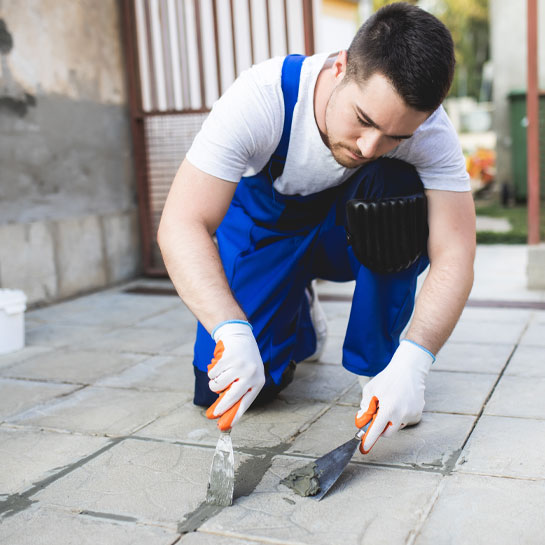Do you dream of a flawless pool or patio that will stand the test of time? Choosing the right materials is crucial, but there is one detail that is often overlooked: the width of the grout between ceramic tiles.
Beyond aesthetics, the width of the grout plays a fundamental role in the durability, safety and hygiene of your outdoor space. In the following lines we are going to see the different comparisons between a bad grout and its disadvantages, as well as give you some tips that will be interesting for you. Let’s get to it!
What is grouting in tile installation?
Grouting in the context of outdoor pools and patios is an essential process in the installation of ceramic tiles or natural stone. More than a mere aesthetic issue, grouting plays a fundamental role in the durability and functionality of these outdoor areas.
First, grouting consists of filling the joints between the tiles with a specific material, such as grout or joint mortar. This grout not only improves the aesthetics of the areaThe grout not only improves the aesthetics of the area, but also has important technical functions. In swimming pool and outdoor patio environments, where exposure to water, humidity and temperature changes is constant, proper grouting is crucial to prevent problems such as water infiltration, dirt accumulation and the proliferation of mold and mildew.
In the case of swimming pools, the grout also plays an important role in the watertightness of the liner, preventing water leaks that could cause structural damage and water loss. A high quality grout contributes to the stability of the tiles, avoiding excessive movements that could cause cracks and detachments.
Why is the grout width important?
The grout width is a crucial factor in the installation of ceramic tiles or natural stone in swimming pools and outdoor patios, and its importance lies in several aspects:

- Aesthetics: The width of the grout directly affects the visual appearance of the area. A narrower grout tends to create more discreet lines and a more uniform appearance, while a wider grout can highlight the tile design and give it a more rustic or modern look, depending on the aesthetic preference of the homeowner.
- Functionality: The width of the grout also influences the functionality of the coating. A wider grout provides a greater ability to absorb movement and expansion, which can be beneficial in areas where significant temperature changes or substrate movement is expected. On the other hand, a narrower grout can provide a more uniform surface that is easier to clean.
- Durability: Properly sized grout contributes to the overall stability and durability of the coating. If the grout is too narrow, it may be more prone to cracking or premature wear, especially in areas subject to heavy use or extreme weather changes. On the other hand, excessively wide grout can result in reduced tensile strength and increased dirt and moisture accumulation.
- Preventing problems: The width of the grout can also affect the system’s ability to resist water infiltration and the buildup of dirt and microorganisms. Grout that is too narrow may not provide enough space for the sealant to adhere properly, increasing the risk of leaks and deterioration of the coating.
How to choose the ideal grout width?
The answer depends on several factors, such as the type of tile, the substrate material, the conditions of use and your aesthetic preferences. However, as a general rule, it is recommended:
- For interior ceramic tiles: At least 3 millimeters.
- For outdoor ceramic tiles: Between 6 and 10 millimeters.
- For swimming pools and patios: Between 6 and 10 millimeters, especially important due to increased exposure to water, humidity and temperature changes.
Technical documentation for perfect grouting
According to the standard UNE 138002:2004 it establishes the requirements and test methods for the grouting of ceramic tiles and natural stone. This standard provides detailed guidelines on materials, surface preparation, grout application, and criteria for evaluating the quality of the grouting process.
Technical Handbook of Ceramic Tile Installation by the Spanish Association of Ceramic Tile Manufacturers (ASEFAPI) is a comprehensive guide that addresses all aspects related to the professional installation of ceramic tiles. is a comprehensive guide that addresses all aspects related to the professional installation of ceramic tiles. In summary, this manual provides detailed information on the following topics
Completion of exterior grouting
Choosing the right grout width is a crucial and indispensable part of the ceramic tile installation process, especially in outdoor areas such as swimming pools and patios, where environmental conditions are more demanding.
Grout that is too narrow can lead to a number of problems, including water seepage that can compromise the structural integrity of the cladding, the growth of mold and mildew in the joints, as well as premature cracking of the grout due to exposure to weathering and temperature fluctuations. This is why the careful choice of grout width is essential to ensure a durable installation that is resistant to the harsh conditions of the exterior environment.


